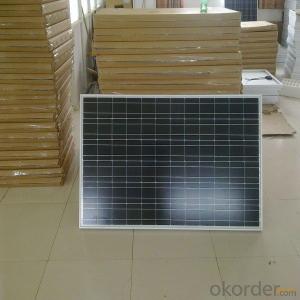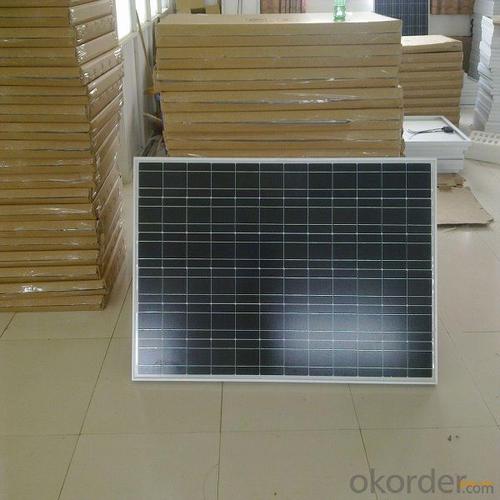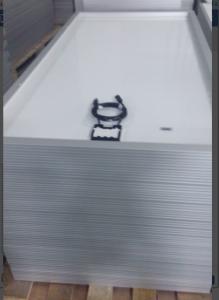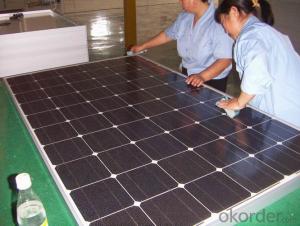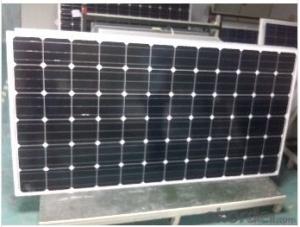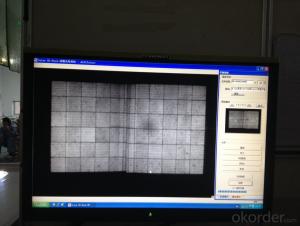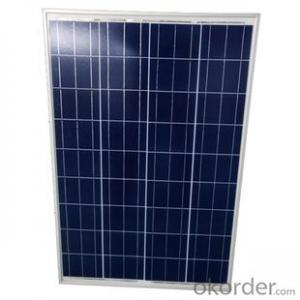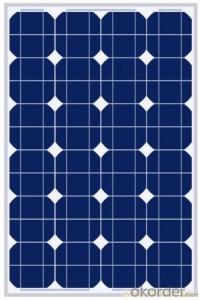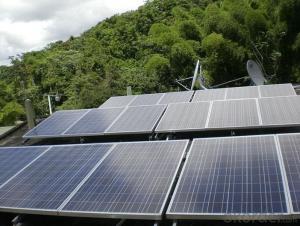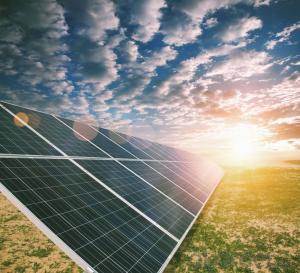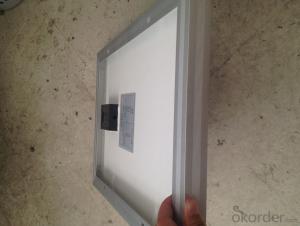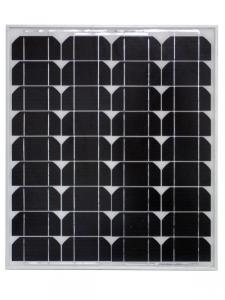High Quality Polycrystalline Solar Panels for Tiny House
- Loading Port:
- Tianjin
- Payment Terms:
- TT OR LC
- Min Order Qty:
- 1000 watt
- Supply Capability:
- 10000000 watt/month
OKorder Service Pledge
OKorder Financial Service
You Might Also Like
Specification
Product Description
Key Specifications/Special Features
Maximum power voltage Vmp: 29.5V
Maximum power current Imp: 7.45A
Open circuit voltage Voc: 37.0V
Short circuit current Isc: 8.10A
Maximum system voltage V DC: 1,000V
Encapsulated solar cell efficiency nc: 18.10%
Module efficiency nm: 14.90%
Solar cell and configuration: polycrystalline
Solar cell technology and size: 156 x 156mm
Number of bypass diodes and type: 3-piece
Maximum series fuse rating: 15A
Temperature coefficient of power: +0.48%/°C
Temperature coefficient of Voc: -0.34%/°C
Temperature coefficient of Isc: -0.037%/°C
Nominal operating cell temperature NOCT: 25°C
Standard test conditions
Irradiance 1,000V/m2, AM1.5 spectrum, moduletemperature 25°C
Operating temperature: -40 to +80°C
Dimensions: 1,640 x 992 x 50mm
Installation hole dimensions: could be following request
Cable length: 90mm
Weight: 22.5kg
Number of draining holes in frame: 4-hole
Construction: 60-piece (6 x 10)
Frame: 50mm
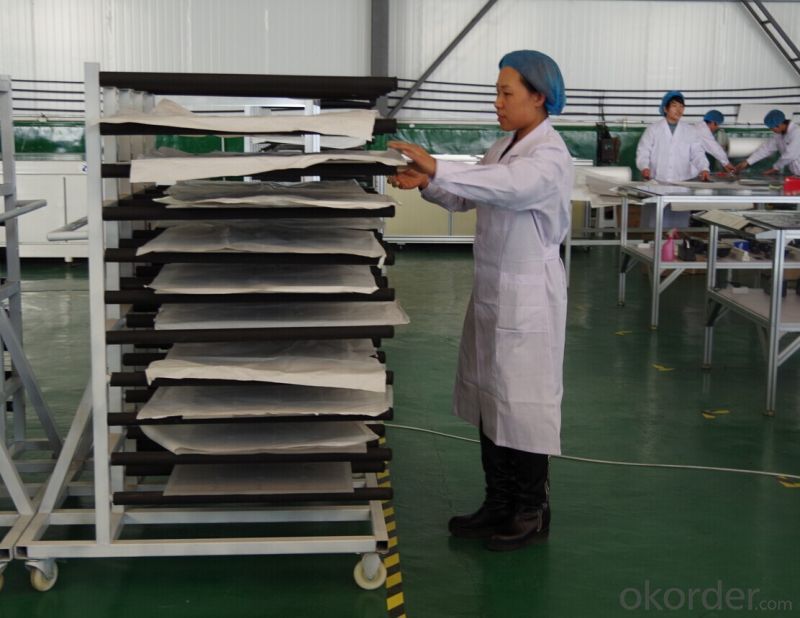
Product Details
| ELECTRICAL CHARACTERISTICS | ||||||||||
| Maximum Power as per STC | Pmax(W) | 230 | 235 | 240 | 245 | 250 | ||||
| Power Tolerance | % | ± 3% | ||||||||
| Maximum Power Voltage | Vm(V) | 30.48 | 30.6 | 30.66 | 30.35 | 30.46 | ||||
| Maximum Power Current | Im(A) | 7.6 | 7.68 | 7.83 | 8.08 | 8.21 | ||||
| Open Circuit Voltage | Voc(V) | 36.6 | 36.72 | 36.84 | 36.36 | 36.5 | ||||
| Short Circuit Current | Isc(A) | 8.17 | 8.23 | 8.32 | 8.79 | 8.93 | ||||
| Maximum System Voltage | VDC | 1000 | ||||||||
| Cell Efficiency | % | 15.8 | 16.1 | 16.4 | 16.8 | 17.1 | ||||
| Module Efficiency | % | 14.1 | 14.4 | 14.7 | 15.0 | 15.3 | ||||
| Cells per Module | Pcs | 60 | ||||||||
| Cell Type | Polycrystalline silicon | |||||||||
| Cell Size | mm | 156 x 156 | ||||||||
| Bypass Diodes | Pcs | 12Amp, 6 pcs | ||||||||
| Max. Series Fuse Rating | A | 15A | ||||||||
| Temperature coefficient of Isc | % / | 0.05 | ||||||||
| Temperature coefficient of Voc | % / | -0.35 | ||||||||
| Temperature coefficient of power | % / | -0.47 | ||||||||
| NOCT- Nominal operating cell temperature | 47 ± 2 degree | |||||||||
| Operating Temperature | -40 to +85 degree | |||||||||
| MECHANICAL CHARACTERISTICS | ||||||||||
| Dimensions | mm | 1650 x 990 x 50 | ||||||||
| Weight | Kg | 19.8 | ||||||||
| Type of Junction Box | TUV certified, IP65 | |||||||||
| Cable Type, Diameter | TUV certified, 4mm 2, 90 cm in length | |||||||||
| Connector | compatible to Type 4 (MC4) | |||||||||
| Tempered Glass | 3.2 mm, high transmission, low iron | |||||||||
- Q: Can solar panels be installed on data centers?
- Yes, solar panels can be installed on data centers. In fact, many data centers are increasingly adopting solar energy solutions to reduce their carbon footprint and dependence on non-renewable energy sources. Installing solar panels on data centers helps generate clean and sustainable electricity, thereby promoting environmental sustainability and cost savings in the long run.
- Q: Can solar panels be used on commercial buildings?
- Yes, solar panels can definitely be used on commercial buildings. In fact, many businesses and organizations are increasingly adopting solar energy as a way to reduce their carbon footprint, save on energy costs, and demonstrate their commitment to sustainability. Solar panels can be installed on rooftops, carports, or open land surrounding commercial buildings, providing a clean and renewable source of electricity.
- Q: Does anyone know how I would go about hooking up the air conditioners in my house to solar panels? I would want just the air conditioners to be powered by solar energy. How could I hook it up where the panels can absorb energy from the sun during the day, and save and store the energy so I can run the air conditioners at night? I really feel that in the long run, this would save a lot of money with the energy bill. It's the use of the air conditioners that drive up the bill. Is this idea feasible? Is it also possible to have some sort of hybrid system where I can switch from solar to my regular local energy source when I want to?
- There are solar air conditioners. They don't use electricity. Most anyway. The number of photovoltaic panels you would need to run a standard electric air conditioner would cover most of the homes on the block. Read about heat pumps, Thermal storage, swamp coolers, solar heating to get an idea of what is practical. Most solar systems are hybrid because of clouds and nightfall. The best solar homes are designed from the ground up. With plenty of insulation, the right size and orientation of windows and collectors. Putting solar on an existing structure is going to be a misfit half donkey job unless you are very lucky.
- Q: Can solar panels be installed on churches or religious institutions?
- Yes, solar panels can be installed on churches or religious institutions. In fact, many religious institutions are embracing renewable energy and installing solar panels on their roofs as a way to reduce their carbon footprint and contribute to a more sustainable future. Installing solar panels on churches not only helps them save money on energy bills but also sets an example for their congregations and communities by promoting clean and renewable energy sources.
- Q: What is the warranty on solar panels?
- The warranty on solar panels typically varies between 10 to 25 years, depending on the manufacturer.
- Q: I have an electric bicycle that I travel to work by, pulling a modified child carrying trailer that holds two 2 volt deep cycle batteries in series to power the 24 volt bike motor. I'm thinking about adding a 50 watt solar panel (or larger depending on the room I can make available) to charge while I'm at work and to provide some extra juice while on my more distant travels.Can I get a solar panel to charge them while they're connected the way they are: in series? Does charging work that way?I've read that in order to charge the 24 volt battery setup (if the answer to the Q above is yes), the output from my solar panel would need to be a little more than 24 volts. Is this true? If so, how many volts?Since the bike is supposed to be powered at 24 volts and I have an x-volt (x gt; 24v) solar panel connected to it, will this cause any damage to the controller or other components while running them?Will it help supply power even while the motor is being run?Thanks.
- You did not give the AH rate from your 24V battery pack,therefore , unable to suggest a correct current rate solar panel. The solar panel open voltage rate at least 30V to charge a 24V cell. No harm to controller since the charging current is so small even bike is in running condition.
- Q: I thought that I had a fairly good understanding of watt's law, but i'm starting to doubt myself.If I have a load of 4500watts at 240 volts, how many watts of solar panels do I need, if the solar panels are at 2v?Yes, Yes... I have a charge controller, batteries, etc...So the way I looked at this at first:watts = volts * amps For the load4500 = 240 * xx would be 8.75aFor the power source (each solar panel)00 = 2 * xx would be 8.3a8.75 / 8.3 = 2.25, rounded up = 3So... based on that I came to the conclusion that I needed 3 solar panels...But... then I was thinking. Does it work that way?Or do I need 4500 / 00 = 45, aka 45 solar panels?In other words...If I have a 2v power source, how many watts do I need to drive a load of 4500w at 240v?ThanksMatt
- The easy way is to just use the power values. You need 4500W. Each solar panel delivers 00W (from a value in your working). Therefore you need 4500/00 = 45 solar panels. This is a crude calculation, ignoring efficiencies, voltage conversion losses and losses due to internal resistance. You would probably need quite a few more than 45 panels. ___________________________ I'll explain how to do the calculation your way. Each solar panel delivers 00W with a voltage of 2V. So the current is 00/2 = 8.333A. Each solar panel delivers 8.333A at 2V. But you require 8.75A at 240V panel delivers 00W. To get 4500W, you need: 8.75/8.333 = 2.25 times more panels to increase the current AND 240/2 = 20 times more panels to increase the voltage. So overall you need 2.25 x 20 = 45 panels. Of course if the power output of each solar panel is not 00W, you have to change the above calculation accordingly.
- Q: Can solar panels be installed on community buildings?
- Yes, solar panels can be installed on community buildings. In fact, community buildings like schools, libraries, and community centers are excellent candidates for solar panel installations as they often have large roofs or open spaces that can accommodate solar arrays. Installing solar panels on community buildings not only helps reduce electricity costs but also promotes sustainability and clean energy in the community.
- Q: how much do solar panels cost?
- The okorder
Send your message to us
High Quality Polycrystalline Solar Panels for Tiny House
- Loading Port:
- Tianjin
- Payment Terms:
- TT OR LC
- Min Order Qty:
- 1000 watt
- Supply Capability:
- 10000000 watt/month
OKorder Service Pledge
OKorder Financial Service
Similar products
Hot products
Hot Searches
Related keywords
